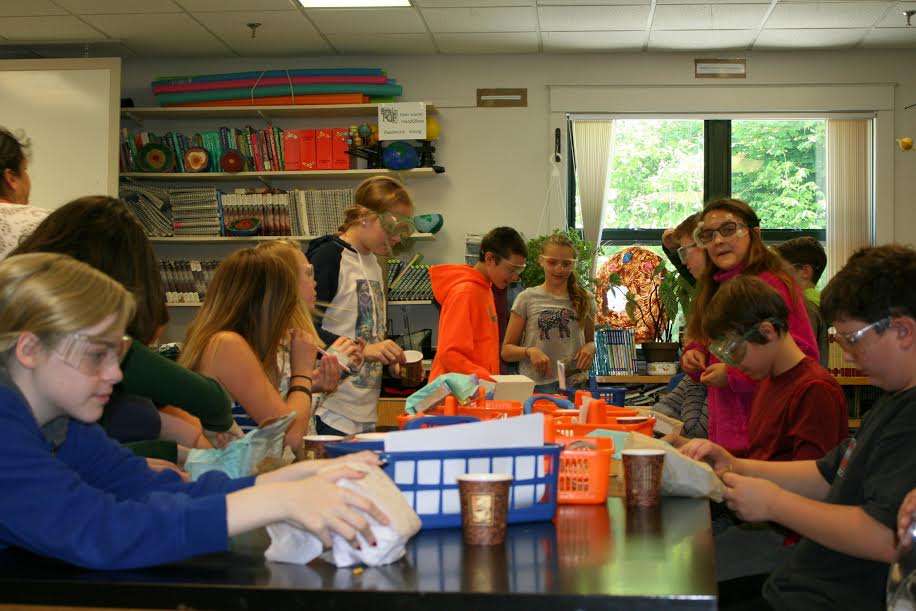STRONG — Strong Elementary School’s sixth-grade cadets went to outer space for 15 weeks, all without leaving their classroom.
The students participated in an unusual middle school science course that sent them on a virtual mission to the International Space Station to investigate key concepts in Earth science, life science, physical science and engineering.
Starting in January, students worked through an intensive series of lessons developed and supported by astronauts, scientists and educators.
Teacher Candace Dunham said she was in awe of the work her students put into their studies, because the curriculum remained challenging throughout the entire semester.
“It was truly an intensive and most demanding effort,” Dunham said. “The class rose to the challenge, making me very proud of the work they did.”
Students started with virtual explorations of the space station and learned how astronauts train and prepare for missions. They performed experiments and conducted investigations on human physiology, on the effects of microgravity, the traumas of space flight, and life on the space station. They studied physical science, looking at the forces vehicles have placed upon them in space. They also learned about ways research on the ISS could benefit lives on Earth.
The process was an eye-opening one for her students, Dunham said.
“To look at our home, the Earth, in its entirety and to be able to see the rest of the world, outside of our cozy walls in Strong, allowed the sixth grade to develop worldly connections that are so hard to make from the secluded classroom,” she said.
Dunham said allowing students to look back at Earth from space provided a powerful new perspective. The curriculum included the opportunity to observe current climate conditions on Earth, discuss historical data and learn about potential implications for the future.
“Being able to see the results of climate change is one thing,” she said. “Studying it from a virtual space platform gave them the ability to actually see and become part of the big picture.”
Student shared some of the challenges they encountered. Isabella Norster said she was challenged to learn and remember the differences between the Earth’s geosphere, biosphere, atmosphere and hydrosphere. Isabella Fernandez said she learned to understand the differences between convection, conduction and radiation. The processes are distinct, although the results can be similar.
“It’s heat displacing the cold,” she said.
Students learned other skills that could be used in their academic careers and in everyday life. Damien Thurlow said he learned about teamwork and cooperation. Damon Atwood said he learned how to find the necessary online resources, including a shared wiki, blogs and discussion groups. When students made a cardboard model of the space station to practice maneuvering skills, the project wasn’t as easy as it looked at first.
”I thought it was a challenge making a robotic arm to move a cup in different directions to get it into the spacecraft,” Jaidyn Stuart said.
Kristie Littlefield, executive director of the 13-member Western Maine Education Collaborative, said the opportunity to participate came from the Virtual High School, a nonprofit group that received funding to provide to Maine students. Littlefield explained that the WMEC’s membership of smaller school districts works to provide rural students an opportunity to experience programs that otherwise would be unaffordable or unavailable to them.
“We’re reaping the benefits of a long-standing collaboration,” she said. “This was an opportunity for middle-school students to participate in a high-quality experience.”

Comments are no longer available on this story